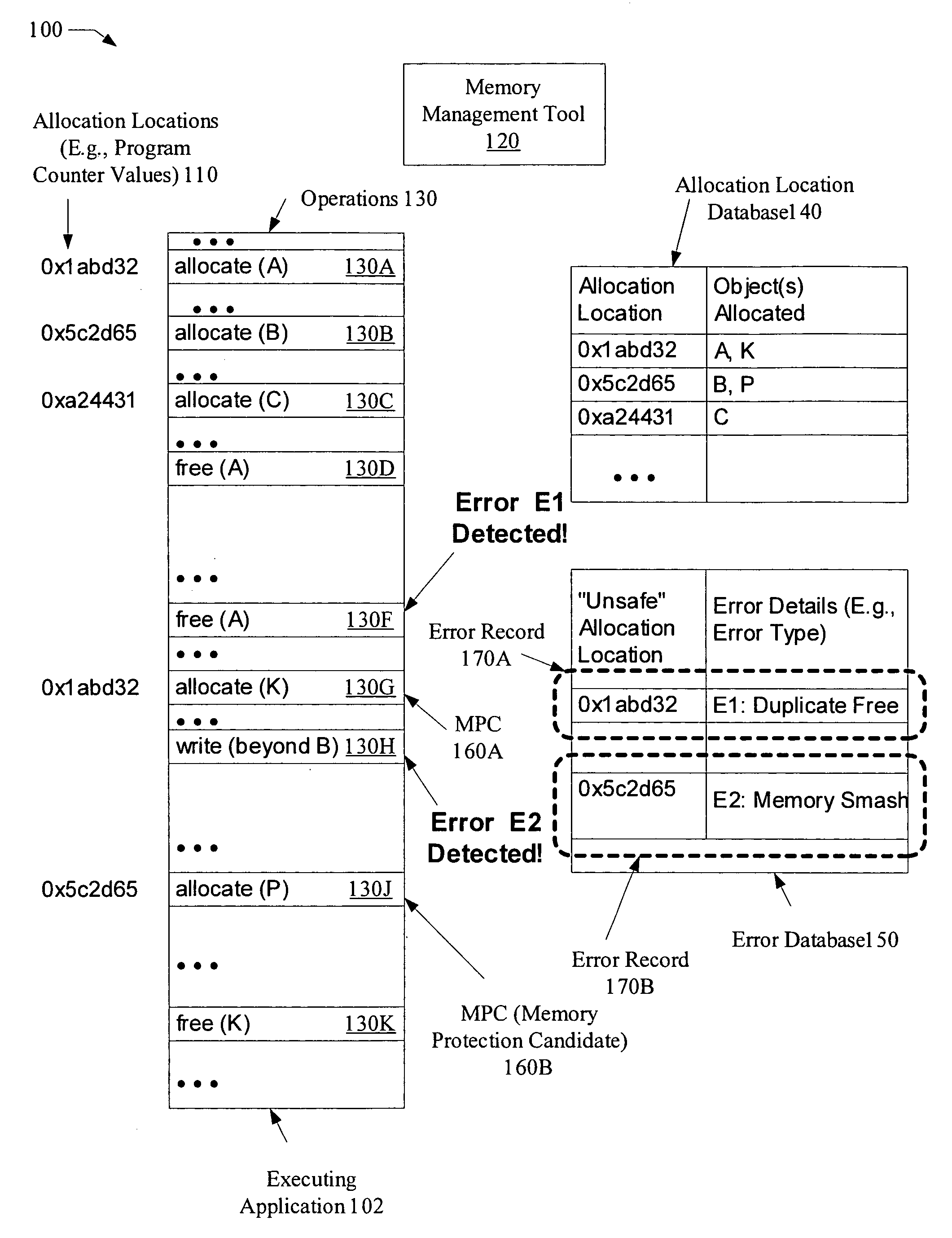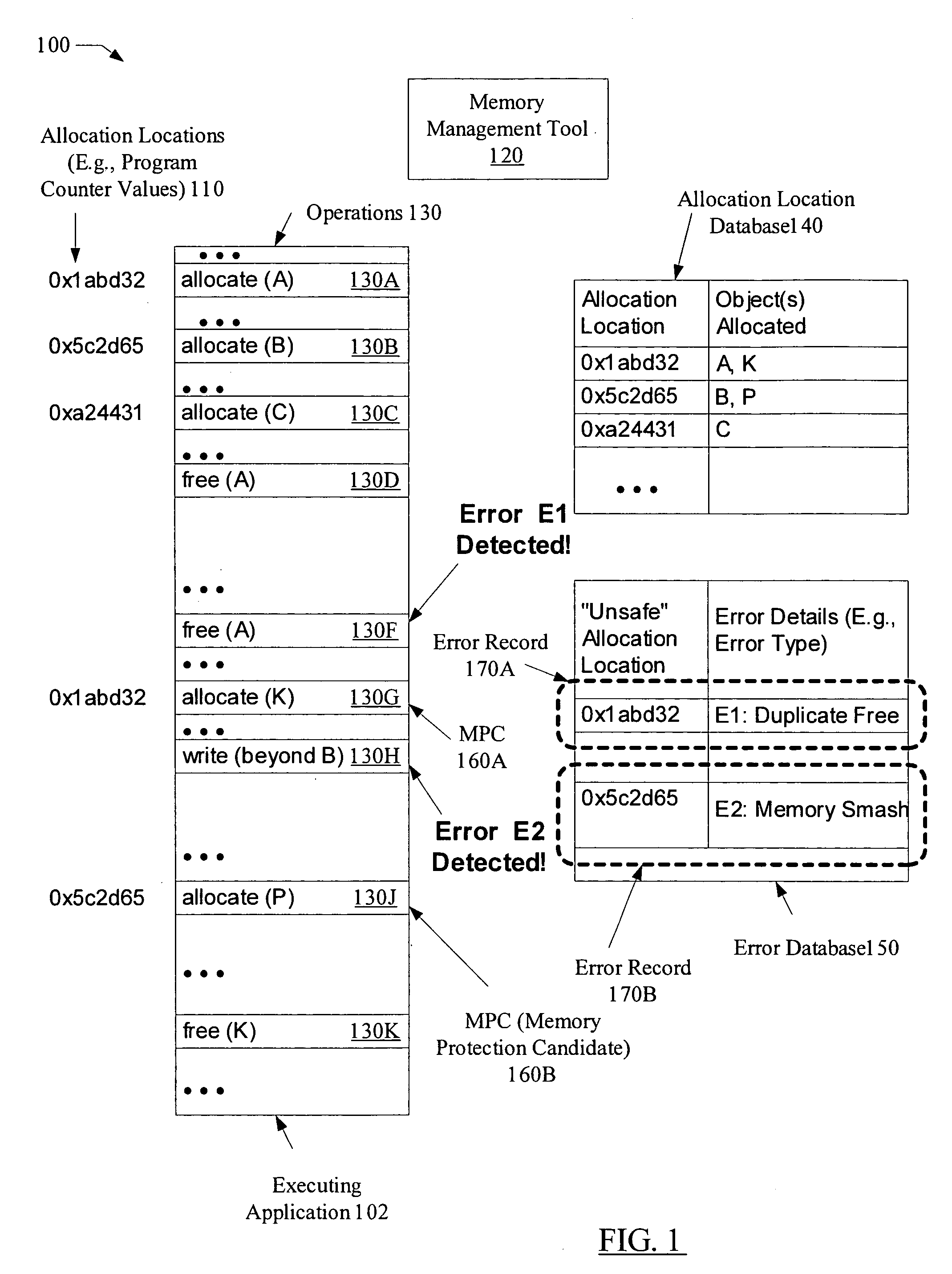Selective self-healing of memory errors using allocation location information
a memory error and location information technology, applied in the field of computer systems, can solve problems such as memory management errors, memory leakage, memory management errors, etc., and achieve the effect of reducing the overhead of memory protection operations
- Summary
- Abstract
- Description
- Claims
- Application Information
AI Technical Summary
Benefits of technology
Problems solved by technology
Method used
Image
Examples
Embodiment Construction
[0017]FIG. 1 is a block diagram illustrating a system 100 according to one embodiment. As shown, system 100 includes a memory management tool 120, an allocation location database 140 and an error database 150. The memory management tool 120 may be configured to detect memory management errors in an executing application 102 and to perform or initiate memory protection operations in response to at least some of the detected memory management errors. The allocation location database 140 and the error database 150 may be implemented as a single database in some embodiments, and may share at least some components in other embodiments. In one embodiment memory management tool 120 may be configured to store, corresponding to each object for which memory is allocated in executing application 102, an allocation location (e.g., a portion of an application stack trace, or a program counter value corresponding to a caller of a function such as malloc( ) that is invoked to allocate the object) ...
PUM
 Login to View More
Login to View More Abstract
Description
Claims
Application Information
 Login to View More
Login to View More - R&D
- Intellectual Property
- Life Sciences
- Materials
- Tech Scout
- Unparalleled Data Quality
- Higher Quality Content
- 60% Fewer Hallucinations
Browse by: Latest US Patents, China's latest patents, Technical Efficacy Thesaurus, Application Domain, Technology Topic, Popular Technical Reports.
© 2025 PatSnap. All rights reserved.Legal|Privacy policy|Modern Slavery Act Transparency Statement|Sitemap|About US| Contact US: help@patsnap.com



